The Aesthetic Zone Challenge: Are You Really Planning for Success?
Restoration of implants in the aesthetic zone presents a unique set of clinical and technical challenges. Achieving a predictable, functional, and aesthetic outcome requires meticulous planning that begins well before implant placement.
It’s a question that has sparked extensive discussion in the literature — but despite the wealth of information, many clinicians still face avoidable complications due to a lack of proper planning.
Restoration Planning Starts Before Implant Placement
When approaching a new implant case, one of the most critical early decisions is the type of restoration: screw-retained or cement-retained. This choice must be considered before the implant is placed, as it directly affects the implant’s position, angulation, and the emergence of the prosthetic screw.
In single-unit edentulous cases, treatment may seem straightforward — a single implant and crown. But if the implant’s 3D position isn’t aligned with the planned restoration, especially in the aesthetic zone, the outcome can be compromised both functionally and aesthetically.
The Screw Access Path: Aesthetics at Stake
In anterior restorations, if the screw access emerges in the wrong place — such as at the incisal edge or, worse, on the buccal surface — it can lead to a disastrous result. Ideally, the screw channel should exit through the cingulum of the crown. This makes implant positioning critical in ensuring a successful, aesthetic restoration.
Unfortunately, improper angulation is often the result of not using a surgical guide or failing to plan based on prosthetic needs.

Screw access location can make or break the restoration’s esthetics — especially in the anterior zone.
Digital Tools Make It Simple — If You Use Them
With today’s software and guided surgery protocols, it's easier than ever to plan implants prosthetically. You can visualize the 3D implant position, screw emergence, and final restoration before surgery — allowing for truly restorative-driven implant placement.
Analog vs. Digital Workflows: Know Your Prosthetic Options
Whether you work with a traditional (analog) or digital workflow, understanding the available prosthetic components is essential — and communication with your lab is key.

Examples of customized abutments and crown designs for anterior restorations.
🔹 Analog Workflow
Cement-retained crowns:
• Prefabricated abutments with hex (straight or angled)
• UCLA castable abutments for custom design
Screw-retained crowns:
• UCLA castable abutments only
🔹 Digital Workflow
Both cemented and screw-retained restorations use Ti-Base with hex
Screw-retained:
• 2 components: Ti-Base + crown with screw access
Cement-retained:
• 3 components: Ti-Base + coping or core + crown

Digital Ti-Base abutment: the foundation of modern screw-retained or cemented crowns.
🎯 Key Takeaway
Implants in the aesthetic zone demand more than surgical precision — they require prosthetic foresight.
Success means:
✅Choosing the right type of restoration early
✅Placing the implant in its ideal 3D position
✅Using the correct prosthetic components
✅Collaborating closely with your lab
Because in the end, a perfectly integrated implant is not enough if it can’t deliver aesthetics, function, and patient satisfaction.
📩 Stay tuned for more practical insights in implantology and restorative dentistry.
Warm regards,

Dr. Bernardo Grobeisen
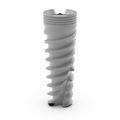
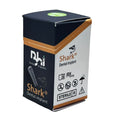
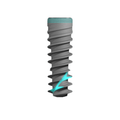
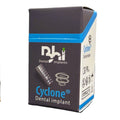
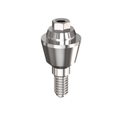
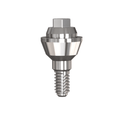
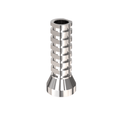
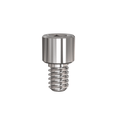






0 comments